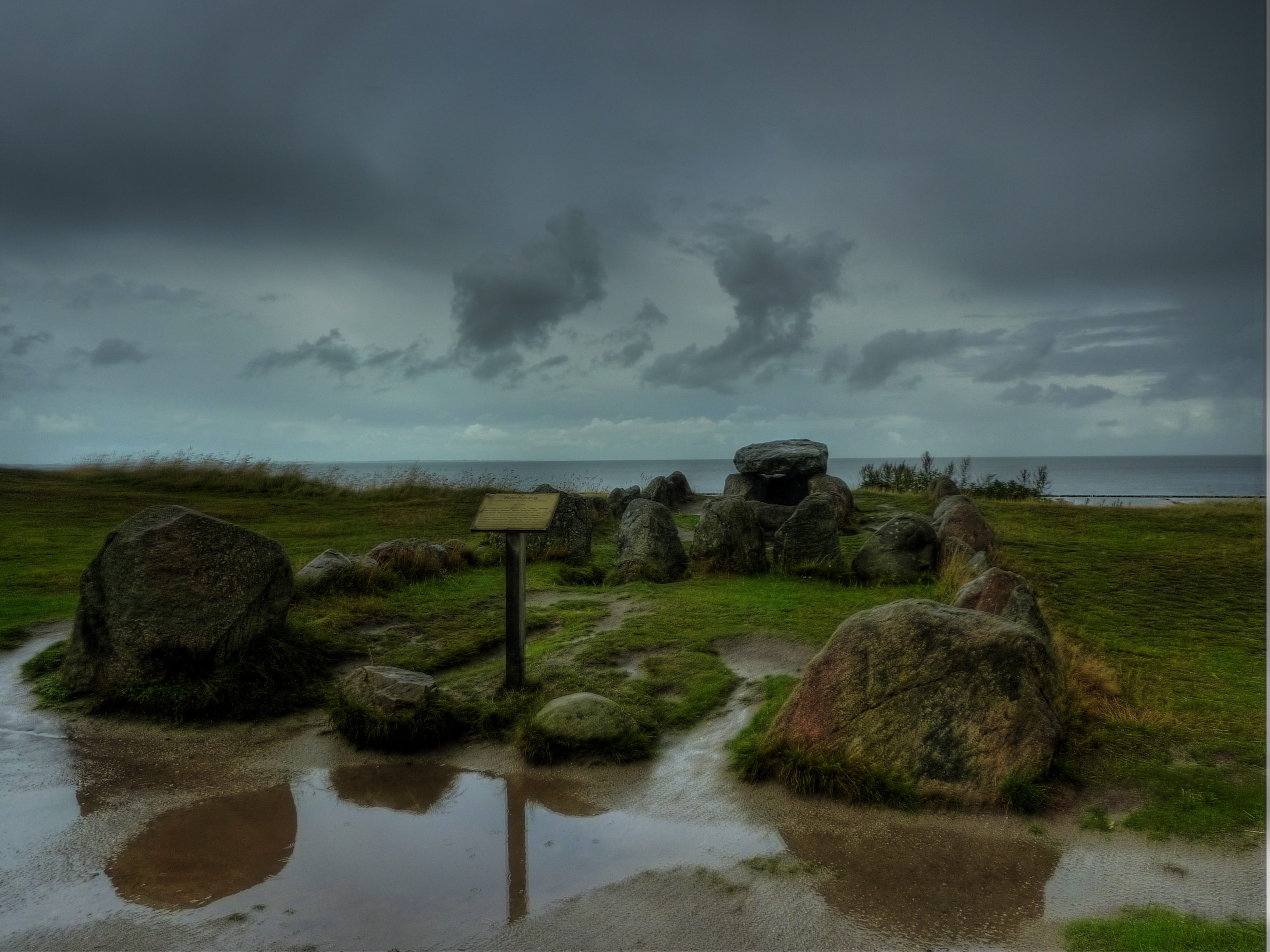Harhoog on:
[Wikipedia]
[Google]
[Amazon]
The Harhoog is a dolmen, a rectangular
 The megalithic Harhoog burial chambers were originally located near the mud-flats between Keitum and
The megalithic Harhoog burial chambers were originally located near the mud-flats between Keitum and
 The graves at Harhoog are dated to the
The graves at Harhoog are dated to the
megalithic tomb
A megalith is a large stone that has been used to construct a prehistoric structure or monument, either alone or together with other stones. There are over 35,000 in Europe alone, located widely from Sweden to the Mediterranean sea.
The ...
from the Funnelbeaker culture
The Funnel(-neck-)beaker culture, in short TRB or TBK (german: Trichter(-rand-)becherkultur, nl, Trechterbekercultuur; da, Tragtbægerkultur; ) was an archaeological culture in north-central Europe.
It developed as a technological merger of lo ...
, located near Keitum
Keitum (Danish: ''Kejtum'', North Frisian: ''Kairem'') is a village on the North Sea island of Sylt in the district of Nordfriesland in Schleswig-Holstein, Germany. Today, it is an ''Ortsteil'' of the '' Gemeinde Sylt''.
Etymology
It is unclea ...
on the island of Sylt
Sylt (; da, Sild; Sylt North Frisian, Söl'ring North Frisian: ) is an island in northern Germany, part of Nordfriesland district, Schleswig-Holstein, and well known for the distinctive shape of its shoreline. It belongs to the North Frisian ...
in Schleswig-Holstein
Schleswig-Holstein (; da, Slesvig-Holsten; nds, Sleswig-Holsteen; frr, Slaswik-Holstiinj) is the northernmost of the 16 states of Germany, comprising most of the historical duchy of Holstein and the southern part of the former Duchy of Sc ...
, Germany
Germany,, officially the Federal Republic of Germany, is a country in Central Europe. It is the second most populous country in Europe after Russia, and the most populous member state of the European Union. Germany is situated betwe ...
.Ernst Sprockhoff. ''Atlas der Megalithgräber Deutschlands - Schleswig-Holstein''. Rudolf Habelt Verlag, Bonn, 1966. Discovered in 1925, it was moved to the present site in 1954 when a new airport was developed.
Geography
 The megalithic Harhoog burial chambers were originally located near the mud-flats between Keitum and
The megalithic Harhoog burial chambers were originally located near the mud-flats between Keitum and Tinnum
Tinnum (North Frisian: ''Tinem'') is a village on the North Sea island of Sylt in the district of Nordfriesland in Schleswig-Holstein, Germany. Today, it is an ''Ortsteil'' of the '' Gemeinde Sylt''.
Etymology
The meaning of Tinnum (North Frisia ...
. The stones were moved to the area near the Tipkenhoog on the coast near Keitum in 1954, when Sylt Airport was under development.
The chambers contain parallel and transverse sections.
History
 The graves at Harhoog are dated to the
The graves at Harhoog are dated to the Neolithic
The Neolithic period, or New Stone Age, is an Old World archaeological period and the final division of the Stone Age. It saw the Neolithic Revolution, a wide-ranging set of developments that appear to have arisen independently in several p ...
and belonged to ancient settlements of the island's Funnelbeaker culture
The Funnel(-neck-)beaker culture, in short TRB or TBK (german: Trichter(-rand-)becherkultur, nl, Trechterbekercultuur; da, Tragtbægerkultur; ) was an archaeological culture in north-central Europe.
It developed as a technological merger of lo ...
, probably around 3000 BC. There were once approximately 600 of them but today only about half of them still exist.
The megalithic tombs are built with large, rough stone slabs (one or more) which are arranged in different patterns. Harhoog dolmen is an extended dolmen, under Ernst Sprockhoff Ernst Sprockhoff (6 August 1892 – 1 October 1967) was a German prehistorian and inventor of the Sprockhoff numbering system for megalithic monuments in Germany.
Life
Sprockhoff was born on 6 August 1892 in Berlin. He started as a teacher before ...
's six-category classification; the other five types are simple dolmen
The simple dolmen (german: Urdolmen, literally "ancient dolmen") or primeval dolmen is an early form of dolmen or megalithic tomb that occurs especially in Northern Europe. The term was defined by archaeologist, Ernst Sprockhoff, and utilise ...
, great dolmen
The great dolmen or grand dolmen (german: Großdolmen, da, Stordysse) is a type of megalithic site of the Funnelbeaker culture (TBK) that occurs in Nordic megalith architecture, primarily in the east of what is now German Mecklenburg-Vorpommern, ...
, passage grave
A passage grave or passage tomb consists of one or more burial chambers covered in earth or with stone, and having a narrow access passage made of large stones. These structures usually date from the Neolithic Age, and are found largely in Wester ...
, long barrow
Long barrows are a style of monument constructed across Western Europe in the fifth and fourth millennia BCE, during the Early Neolithic period. Typically constructed from earth and either timber or stone, those using the latter material repre ...
s (without a burial chamber) and cist
A cist ( or ; also kist ;
from grc-gre, κίστη, Middle Welsh ''Kist'' or Germanic ''Kiste'') is a small stone-built coffin-like box or ossuary used to hold the bodies of the dead. Examples can be found across Europe and in the Middle Ea ...
.
Harhhog was discovered in 1925 during excavations of earth for the construction of the Hindenburgdamm
The Hindenburgdamm or Hindenburg Dam is an 11 km-long causeway joining the North Frisian island of Sylt to mainland Schleswig-Holstein. Its coordinates are . It was opened on 1 June 1927 and is exclusively a railway corridor. The companie ...
, but was only inspected archaeologically in 1936.
References
External links
{{coord, 54.8907, 8.3826, type:landmark_region:DE, display=title Dolmens in Germany Sylt Buildings and structures in Nordfriesland